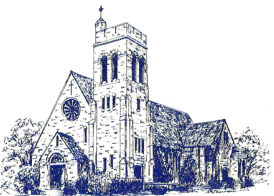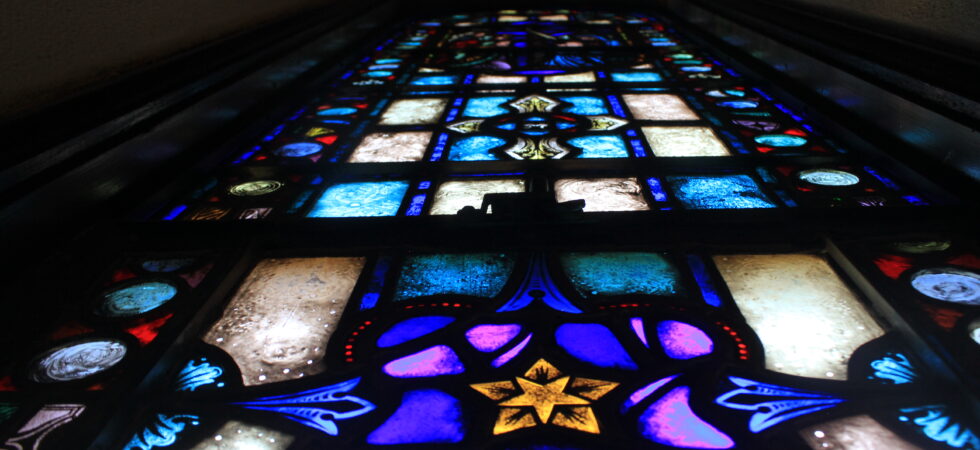Stained Glass Window Tour
The Church and its Windows: A Shared Experience
One experience that we all have in common, from the first Mass at the Byrnes house in 1921 to last Sunday’s 9:00 a.m., is the sharing of the Holy Eucharist. The word Eucharist is derived from a Greek word meaning thanksgiving. Throughout our 75 year history, we have come to Mass to offer our thanks, and the idea of thanksgiving is embedded in the beautiful windows of our church.
The period of our church’s construction (1939 – 1940) coincided with an era of great artistic and architectural revival in America, especially in church architecture. Artists were deliberately trying to recreate what they considered to be the purest forms of church art. For example, Assumption was built in the Norman Gothic style which first appeared in France and England in the 12th Century. The color scheme of the windows, dominant blues with subordinate reds and whites, was an attempt to copy that of the great 13th Century French cathedrals.
This period was also influenced by the implementation of liturgical reforms called for by Pope Pius X. Fr. Christopher, the pastor, wanted to building to be centered upon the Sacrifice of the Mass, and he wanted the windows to have a meaning. In the Liturgy we bring the gifts of bread and wine to the altar, as symbols of our thankfulness. At the Consecration they become the Body and Blood of our Lord, and then the priest prays, “Lord, let your angel take these gifts to your heavenly altar,” where they are accepted by God and later returned to us at Holy Communion.
The windows in the Sanctuary over the altar represent the angel carrying the gifts to the heavenly altar. There are three elongated, or lancet windows, with four panels, known as medallions, in each. In the center of these medallions one sees symbols such as the Crown of Thorns, the Robe, the Ladder and Lance, the Cock that Crowed, and the Cup of Gethsemane, just to name a few. In Church art, these symbols are known as the “instruments of the Passion,” and are representative of our Lord’s Sacrifice. In sacred art, angels are commonly depicted blessing these “instruments” before the “heavenly altar,” and this is the purpose of the two angels with the censer that we see above the middle window.
Looking to the back of the Church we also see the “heavenly altar” in the beautiful rose window. In the center of the altar reclines the Lamb of God on the seven seals with the banner of the Resurrection just as portrayed in the Book of Revelations. Surrounding the Lamb in the petals of the rose are symbols of the twelve Apostles. For instance, we can see the crossed key which symbolize St. Peter and the three purses of St. Matthew, the tax collector. The rose window is the traditional rendering of the Last Judgment in Christian art. The Apostles represent us at the end of time when, according to St. John, the Lamb who is in the midst of the throne will shepherd them, and will guide them to the fountains of the waters of life, and God will wipe away every tear form their eyes.
The Digital Tour
Our annual walking Stain Glass Window Tour is conducted in November by Dr. Frank DeStefano. If you missed the session for this year or if you want to look again, now you can do so from the comfort of your home! A digital tour is available for your viewing below.

